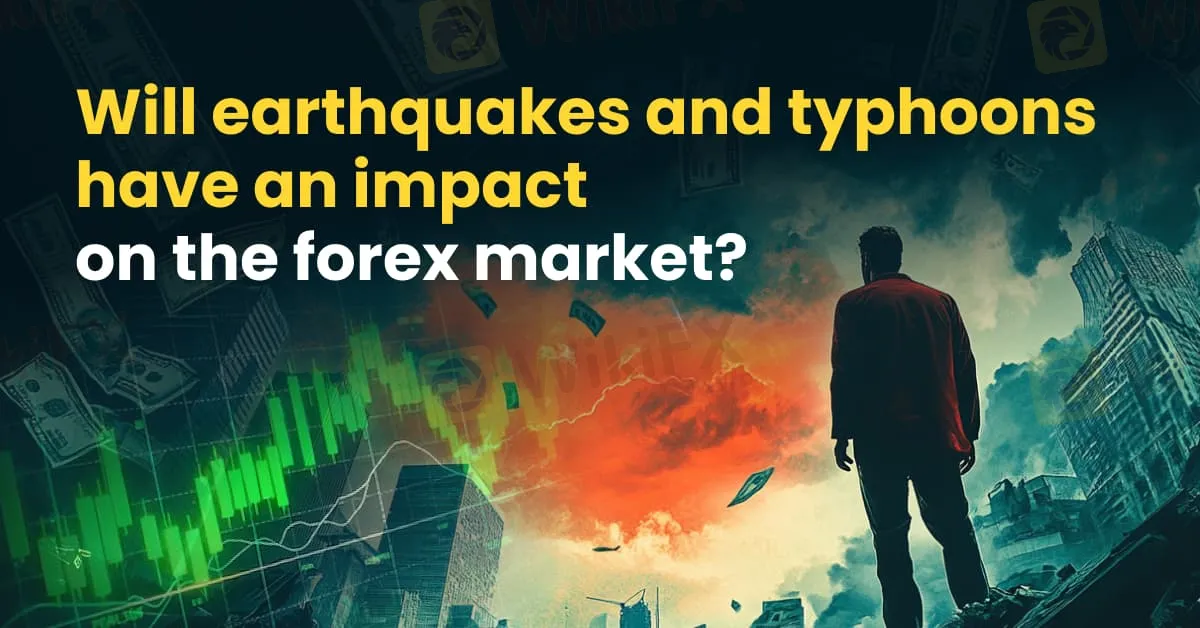简体中文
繁體中文
English
Pусский
日本語
ภาษาไทย
Tiếng Việt
Bahasa Indonesia
Español
हिन्दी
Filippiiniläinen
Français
Deutsch
Português
Türkçe
한국어
العربية
Will natural disasters have an impact on the forex market?
Abstract:The forex market is known for its rapid responses to global events, but the influence of natural disasters, such as earthquakes and typhoons, can be less straightforward. While headlines may scream about catastrophic damage and economic disruption, the long-term effects on currency values often depend on a blend of immediate shock and underlying economic fundamentals.

The forex market is known for its rapid responses to global events, but the influence of natural disasters, such as earthquakes and typhoons, can be less straightforward. While headlines may scream about catastrophic damage and economic disruption, the long-term effects on currency values often depend on a blend of immediate shock and underlying economic fundamentals.
Forex Market Sensitivity to Global Shocks
At its core, the forex market is driven by investor expectations about economic performance. Global events—from political shifts to natural disasters—can introduce volatility. However, seasoned traders know that the market is forward-looking. A brief spike in volatility is common, but currencies eventually gravitate toward values that reflect long-term economic strength and policy direction. As noted by Investopedia, “global events can immediately affect exchange rates and currency values due to the interconnectedness of the forex marketplace.”
Earthquakes vs. Typhoons: Different Disasters, Different Impacts
Earthquakes
Earthquakes tend to have an immediate, dramatic effect because they often strike without warning and can severely damage critical infrastructure. A historical example is Japan‘s 2011 Tōhoku earthquake and tsunami. Despite the initial plunge in market confidence, Japan’s currency—while volatile—recovered as investors focused on the countrys robust economic fundamentals and reconstruction efforts. This case shows that even catastrophic events might only lead to short-term market disruptions if the long-term outlook remains positive
Typhoons
Typhoons, on the other hand, are usually forecasted days in advance. This lead time often allows governments and businesses to activate emergency measures and secure insurance payouts, which can mitigate the immediate economic shock. In regions prone to typhoons, such as parts of Southeast Asia, the impact on the forex market is typically localized. Although there might be temporary shifts—especially in sectors like agriculture and tourism—the overall currency value is less likely to suffer a prolonged decline, as reconstruction and relief measures quickly restore market confidence
Why the Forex Market Often Braces for the Storm
A key factor in the forex markets resilience is its forward-looking nature. Traders and investors focus on long-term fundamentals like GDP growth, monetary policy, and overall economic health. Even when a disaster introduces short-term uncertainty, if the underlying economic framework remains strong, the currency is likely to recover. Moreover, global financial networks—ranging from insurance mechanisms to international aid—help cushion the economic blow, limiting the sustained impact on exchange rates.
Strategic Considerations for Traders
For forex traders, understanding the nuanced impact of natural disasters is essential. Here are some strategies to consider:
- Risk Management: Use stop-loss orders and diversify exposure to limit potential losses during volatile periods.
- Hedging: Consider instruments like options or forward contracts to mitigate short-term risk.
- Stay Informed: Monitor both the immediate news and longer-term economic indicators, ensuring that decisions are guided by the broader economic outlook rather than panic.
Conclusion
While earthquakes and typhoons can induce short-term volatility in the forex market, their long-term impact is often moderated by the markets reliance on economic fundamentals and its forward-looking nature. Even in the face of dramatic natural events, well-prepared economies and effective risk management strategies can help stabilize currency values over time.

Disclaimer:
The views in this article only represent the author's personal views, and do not constitute investment advice on this platform. This platform does not guarantee the accuracy, completeness and timeliness of the information in the article, and will not be liable for any loss caused by the use of or reliance on the information in the article.
Read more

Fed Holds Rates Steady! Yen Faces Growing Uncertainty
The Fed stays put but strikes a hawkish tone. The yen remains under pressure as market uncertainty deepens.

Is Your Money Safe with Libra Markets? Check Out Fast!
n this exposure episode, we will take you through the heinous game played by Libra Markets, an unregulated forex broker. Take a look at how people are facing issues regarding withdrawals.

TradeHall vs. HYCM: Which Broker Should You Choose?
When choosing a broker, understanding the difference between superficial features and real regulatory protection is essential. In this article, WikiFX will compare TradeHall and HYCM. While on the surface, both brokers offer a wide range of trading instruments, the real difference lies in their regulatory statuses, which is a commonly overlooked factor for traders when they opt for brokers.

Trade Nation vs. FBS: Which Broker Is Better for New Traders?
If you're new to trading, choosing the right broker can feel overwhelming. Two popular choices, Trade Nation and FBS, offer very different experiences. This comparison breaks down which is better suited for beginners, based on ease of use, safety, costs, and support.
WikiFX Broker
Latest News
Tether Freezes $12.3 Million in USDT Over Money Laundering Concerns
MiCA Unlocks EU Crypto Market, but National Tensions Rise as Gemini and Coinbase Near Approval
Retirement Dreams Shattered: Don't Do This To Yourself!
Philippines Sets Southeast Asia’s First Crypto Regulatory Framework
EU Regulators Imposed Over €71M in Sanctions in 2024, ESMA Calls for Enforcement Convergence
FortuixAgent Review 2025: Is it Scam or Legit?
Danske Bank expects the European Central Bank to make its final interest rate cut in September.
No Regulation, Revoked Licence: Is Tradehall Safe to Use?
FXGT.com Trading Platform Review 2025
ATTENTION! Red Alert on These Brokers !
Currency Calculator



